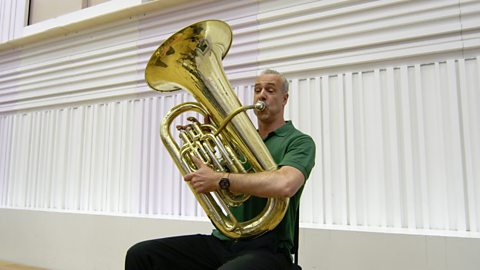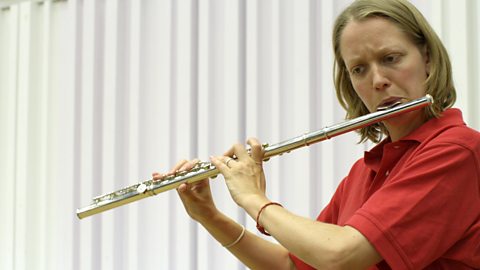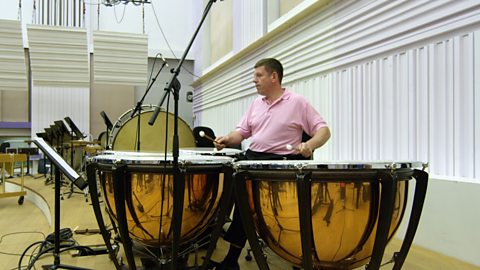Stringed instruments have featured in a classical orchestra for centuries, especially the violin, viola, cello and double bass. Read all of the facts and watch the ┤¾Ž¾┤½├Į Philharmonic play the instruments below.
What to consider when choosing a string instrument
Versatile in genres: There are string instruments that you can pluck, bow or both, the instruments on this page are capable of doing both and are versatile amongst the different genres of music. Their qualities make them ideal when choosing a new instrument to play.
Hand coordination: Coordination between the two hands is a must and possession of nimble fingers is favourable, but learning a string instrument will help you gain these qualities.
Once you have learnt one string instrument it is possible to transfer your skills on to another.
What are stringed instruments made from
Traditionally the body of a string instrument is made of different woods and the bow hairs are from a horse. Strings are made of a synthetic material but some traditionalists still prefer to use strings made from dried out animal guts.
How to play stringed instruments
Playing a stringed instrument requires strings to be stretched out over the instrument that has a hollow body. When the strings are struck they vibrate and amplified by the instrumentŌĆÖs hollow body.
The strings can be struck either by finger plucking or with a bow - a long piece of wood with horse hair stretched between the two ends.
Whilst one hand moves the bow the other plays the notes by placing the tips of the fingers at specific points along the neck.
Depending on their size will determine where the instrument is placed; a violin and viola will rest on the shoulder whereas double basses and cellos are played vertically as they are equipped with an extension peg that is in contact with the floor.
The sound they make
There are many different sounds a classical stringed instrument can make. Strings played with the hairs on a bow with sound smooth but a player can be told to tap the strings with the wooden back of the bow to create a different sound.
Plucking a string will sound sharp and short in comparison to using a bow.
Example listening pieces
Johann Sebastian Bach: Cello Suites in G Major
Sergei Prokofiev: Romeo & Juliet, Act 1, No.13 - Dance of the Knights
Ludwig van Beethoven: Symphony No.7 in A Major, 2nd movement. Allegretto
Bed┼Öich Smetana: M├Ī Vlast, 2. Vlatva
The violin
The leading stringed instrument in any classical orchestra. They play both the leading melodies including solos and harmony parts.
They are the smallest of the other string instruments so can play the highest notes and are the easiest to transport. A violin's small body and neck length make them manageable to younger learners.
An orchestra also has a lead violinist who directs the orchestra in tuning up and will traditionally play the violin solos. The lead violinist will sit closest to the conductor.
Working towards becoming a violinist will develop leadership qualities because of its history and its favourable melodies.
The violin has to rest between the shoulder and chin of the player which can be off at first. A chin rest can be used to help keep in place.
The viola
Slightly bigger than the violin, a viola is deeper in pitch and richer in tone than its leading relative. The two instruments look identical to the untrained eye.
They almost always accompany the leading instrument in harmony but sometimes will have a featuring solo.
Although there arenŌĆÖt as many violas compared to violins there are still around 15 of them and they sit between the violins and cellos, in front of the woodwind.
A viola is still easy to transport and hold which means they are an equally good place to start or move on to if you're looking for a new instrument.
They are tuned a fifth lower from a violin, too, which means it won't be a difficult swap.
The cello
Measured at around 4 foot long a cello has to rest on the floor rather than on your shoulder. They have to be placed between your legs so to make it easier to reach the full length of the neck.
Even though the cello is still easy to transport, it does need someone who has big enough hands to bridge across the neck and press down the thicker strings.
Cellos share the same pitch range as human voices making them a popular choice for solo pieces as well as accompanying soloists.
The double bass
The largest of all the stringed instruments, standing at six feet tall, the double bass plays the lowest notes in the family. Just like a cello, the body is played upright and rests on a metal peg.
Its great size requires strength to move it around, long arms and large hands to really be able to play it.
Often heard in classical music, a double bass will play a pedal note - a low-pitched held note which pins the rest of the orchestra to a particular key signature. A pedal note is played with the bow.
One of the characteristics of jazz music is a walking bass line - the double bass line becomes more melodic, moving between each of the chords in a scalic fashion.
Double basses are popular with lots of musicians and often replaces electric bass guitars if necessary.
More from Bring the Noise
The brass family
Discover the trumpet, French horn, trombone and tuba.

The woodwind family
Find out about the wind family; flute, clarinet, oboe and bassoon.

The percussion family
Learn about the different percussion instruments including timpani drums.
